
Are you looking to design your own t-shirt and make a lasting impression? We are specialized in t-shirt
printing in dubai. The key to achieving printing perfection lies in selecting the right materials and
printing techniques. From the durability of the fabric to the vibrancy of the colors, every element
plays a significant role in producing a high-quality t-shirt with printing.
When it comes to choosing the materials for your t-shirt, consider factors such as comfort,
breathability, and longevity. Cotton is a popular choice due to its softness and ability to absorb
moisture, while polyester blends offer increased durability and resistance to wrinkling. Additionally,
selecting the appropriate printing technique is essential to bringing your design to life. Options such
as screen printing, heat transfer, and DTF printing each offer distinct advantages, depending on your
design needs and budget.
Cotton is a classic choice for t-shirt materials due to its softness and breathability. It is a natural fiber that feels comfortable against the skin and allows for excellent air circulation, making it ideal for everyday wear. Cotton t-shirts are also highly absorbent, making them great for those hot summer days when you want to stay cool and dry.
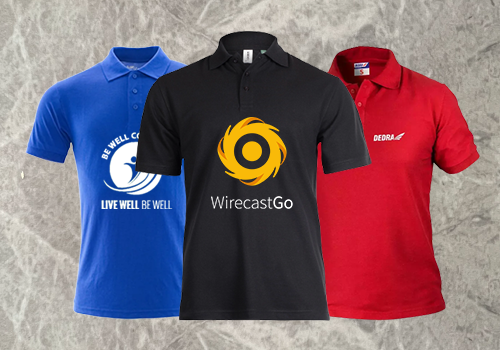
Polyester are becoming increasingly popular in the world of t-shirt design. These polyester material offers enhanced durability, wrinkle resistance, and moisture-wicking properties. Polyester are known for their ability to retain color vibrancy and shape, making them a great option for athletic wear or designs that require long-lasting prints.
Polyester and Cotton Mixed t-shirts are made from a combination of Two fibers: cotton and polyester. This unique Mixed offers the best of both worlds, combining the softness of cotton, the durability of polyester. Polyester and Cotton Mixed t-shirts are known for their luxurious feel and ability to retain their shape even after multiple washes.
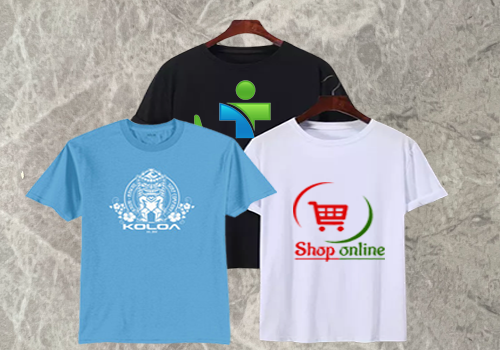
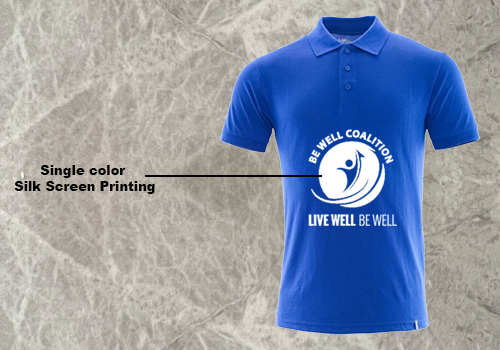
Screen printing is one of the oldest and most widely used techniques for t-shirt printing. It
involves creating a stencil, or screen, and using it to apply layers of ink onto the fabric.
Screen printing offers excellent color vibrancy, durability, and versatility, making it
suitable for designs with solid colors or bold graphics. It is especially popular for
large-scale production runs due to its cost-effectiveness.
Screen printing is one of the most popular and versatile techniques for t-shirt design. It
involves creating a stencil, or screen, and using it to apply ink onto the fabric. This
technique allows for vibrant colors and precise details, making it ideal for large, bold
designs.
To begin the screen printing process, a design is transferred onto a fine mesh screen, with each
color requiring a separate screen. The ink is then pushed through the screen using a squeegee,
transferring the design onto the fabric. This method provides excellent color saturation and
durability, ensuring that your design will stand the test of time.
One of the advantages of
screen printing is its versatility. It works well on a variety of materials, including cotton,
polyester, and blends. Additionally, screen printing offers a wide range of ink options, including
metallics and special effects, allowing for endless creative possibilities.
However, it's
important to note that screen printing is more suitable for larger production runs, as the process
can be time-consuming and very low price for large quantities. Additionally, intricate designs with
fine details may not translate as well using this technique. Overall, screen printing is an
excellent choice for bold, one or two color designs that require durability and longevity.
Heat transfer involves cutting designs from vinyl sheets and applying them to the fabric
using heat and pressure. This technique allows for precise and intricate designs, making it
popular for customizations and personalized t-shirts. Heat transfer offers excellent color
opacity and durability, but it is important to follow proper care instructions to ensure the
vinyl does not peel or crack over time.
Heat transfer vinyl is a popular technique for
customizing t-shirts, particularly for single-color or simple designs. This method involves
cutting a design out of vinyl material and then using heat and pressure to transfer it onto
the fabric. Heat transfer allows for precise, crisp designs and is commonly used for
creating names, numbers, and logos on sports uniforms.
To create a design using Heat transfer, a cutting machine is used to cut the desired shape out of
the vinyl material. The excess vinyl is then removed, leaving only the desired design on a carrier
sheet. The design is placed onto the fabric, and heat is applied using a heat press or household
iron, causing the vinyl to adhere to the fabric.
One of the advantages of Heat transfer is its
durability. The vinyl material is resistant to fading, cracking, and peeling, ensuring that your
design will last for a long time. Heat transfer is also suitable for a wide range of fabrics,
including cotton, polyester, and blends.
However, it's important to note that Heat transfer is
limited to single-color or simple designs. It may not be the best choice for complex, multi-color
artwork. Additionally, Heat transfer can feel slightly thicker on the fabric compared to other
printing techniques. Overall, heat transfer vinyl is an excellent option for customizing t-shirts
with simple, durable designs.
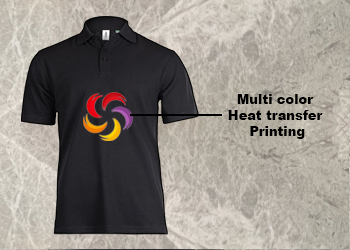
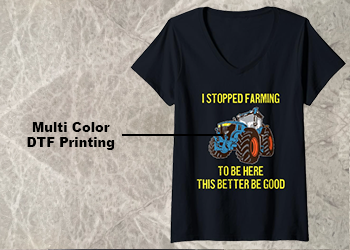
DTF printing is a modern technique that utilizes specialized inkjet printers to apply ink
directly onto the fabric. This method allows for intricate designs with a high level of
detail and color accuracy. DTF printing is ideal for small batch production or one-off
designs, as it does not require the creation of screens or stencils. However, it is
important to note that DTG printing is cost-effective for large-scale production runs.
DTF printing is a relatively new technique that has gained popularity in recent years. This
method involves using a specialized printer to apply ink directly onto the fabric, resulting
in a soft, vibrant design. DTF printing is particularly well-suited for intricate designs
with a high level of detail and multiple colors.
The process starts by pre-treating the fabric to ensure proper ink absorption. Then, the garment is
loaded onto the printer, and the design is printed directly onto the fabric. DTF printing allows for
precise color matching and the ability to reproduce complex artwork faithfully.
One of the key
advantages of DTF printing is its ability to produce high-quality prints with unlimited colors. This
technique also works well on a wide range of materials, including cotton, polyester, and blends.
Additionally, DTF printing is an excellent choice for small production runs, as it does not require
any set-up fees or minimum order quantities.
However, it's important to consider that DTF
printing may not be as durable as other techniques, especially when applied to darker fabrics. The
ink sits on top of the fabric rather than being absorbed. Nonetheless, for intricate, colorful
designs and smaller quantities, DTF printing is an excellent choice.
Sublimation printing involves using heat to transfer dye onto the fabric, resulting in
vibrant and long-lasting designs. This technique works best on polyester or polyester-blend
fabrics, as the dye molecules bond with the fibers. Sublimation printing offers unlimited
color options and allows for full-color, all-over designs. However, it is important to note
that sublimation printing is not suitable for cotton or natural fiber fabrics.
Sublimation printing is a technique that involves transferring dyes onto synthetic
fabrics, such as polyester, using heat. This method allows for full-color, photo-quality
designs with excellent durability and color vibrancy. Sublimation printing is commonly used
for sports jerseys, activewear, and other garments made from synthetic materials.
The sublimation printing process begins by printing the design onto a special sublimation paper using
dye-based inks. The paper is then placed on the fabric, and heat is applied, causing the ink to turn
into a gas and permeate the fabric. As the fabric cools, the ink solidifies, resulting in a
permanent, vibrant design.
One of the advantages of sublimation printing is its ability to
produce vibrant, long-lasting designs that won't fade or crack over time. The technique is also
suitable for complex, full-color artwork, as it allows for precise color reproduction and excellent
detail.
However, it's important to consider that sublimation printing only works on all
materials, such as polyester and cotton. Additionally, sublimation printing is a more specialized
technique that requires specific equipment and materials. Nonetheless, if you're looking for
high-quality, full-color designs on fabrics, sublimation printing is an excellent choice.
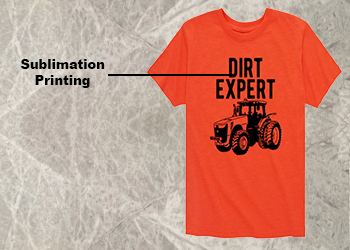

1. Choose clean and simple designs that will stand the test of time. Avoid overcrowding the
design with too many elements or intricate details.
2. Choose colors that complement each other and ensure your design stands out. Consider the
color of the fabric when selecting your design colors.
3. ensure your design files are
in the appropriate format. Vector files, such as .ai or .eps, are ideal for ensuring
high-quality prints.
4. Properly caring for your printed t-shirts is essential to
maintaining their appearance and longevity. Always follow the care instructions provided by
us to ensure your designs last.

Behind Shafeer Market,
Industrial Area 17,
Sharjah - UAE.